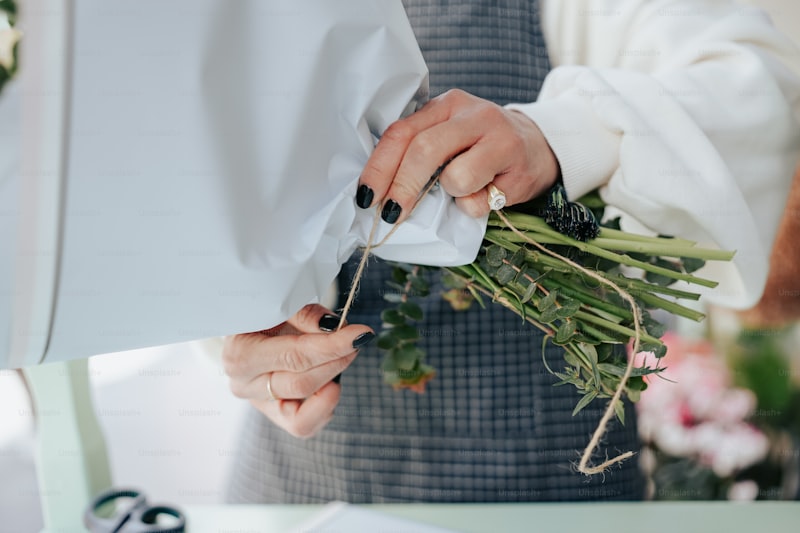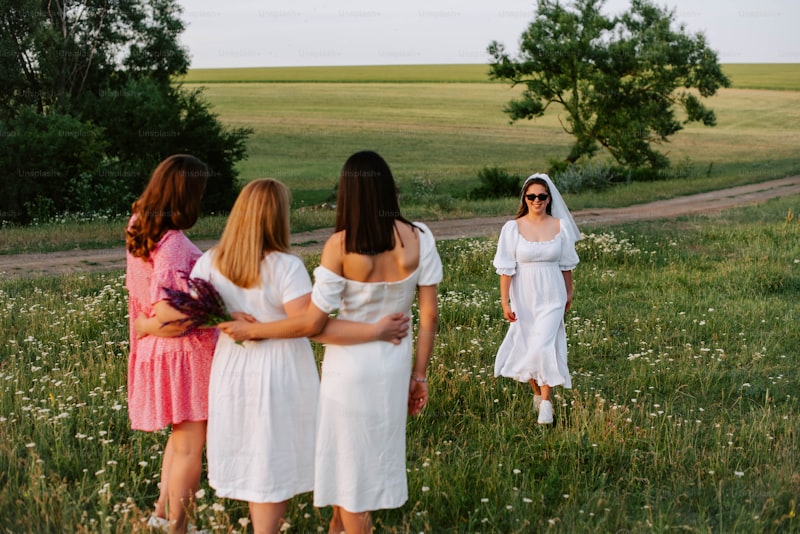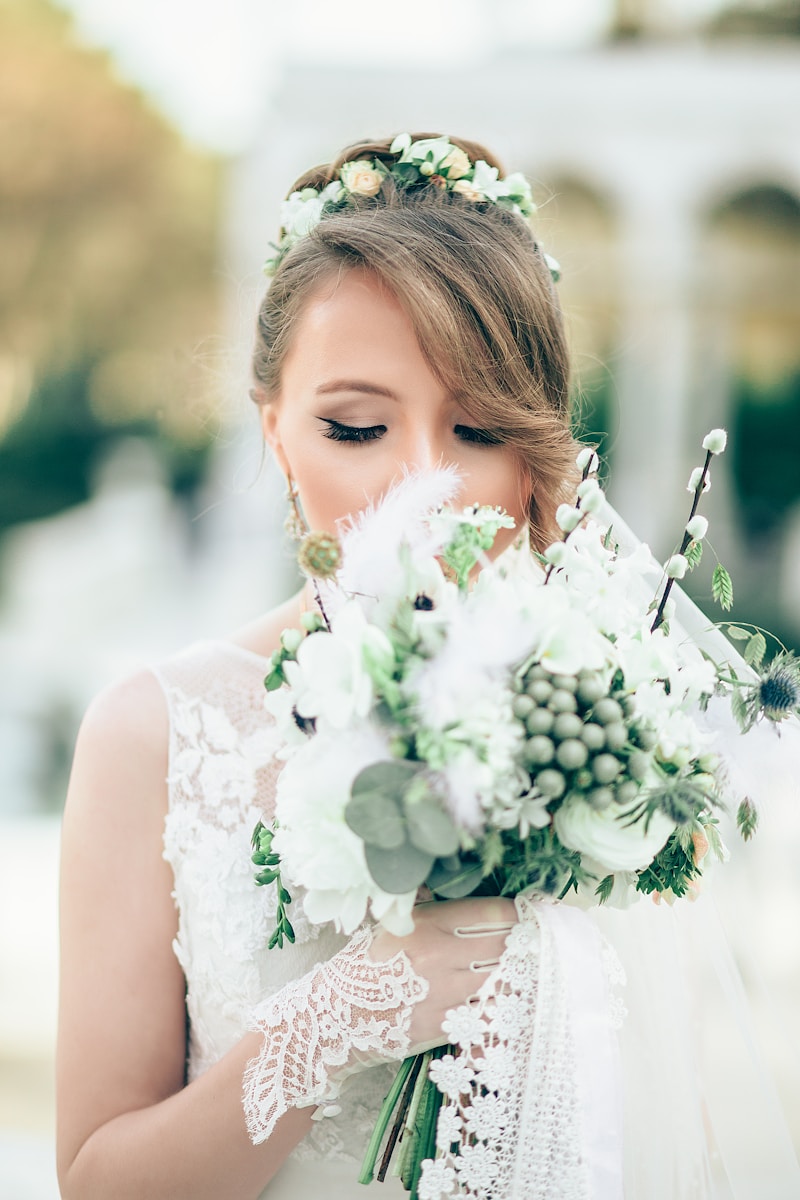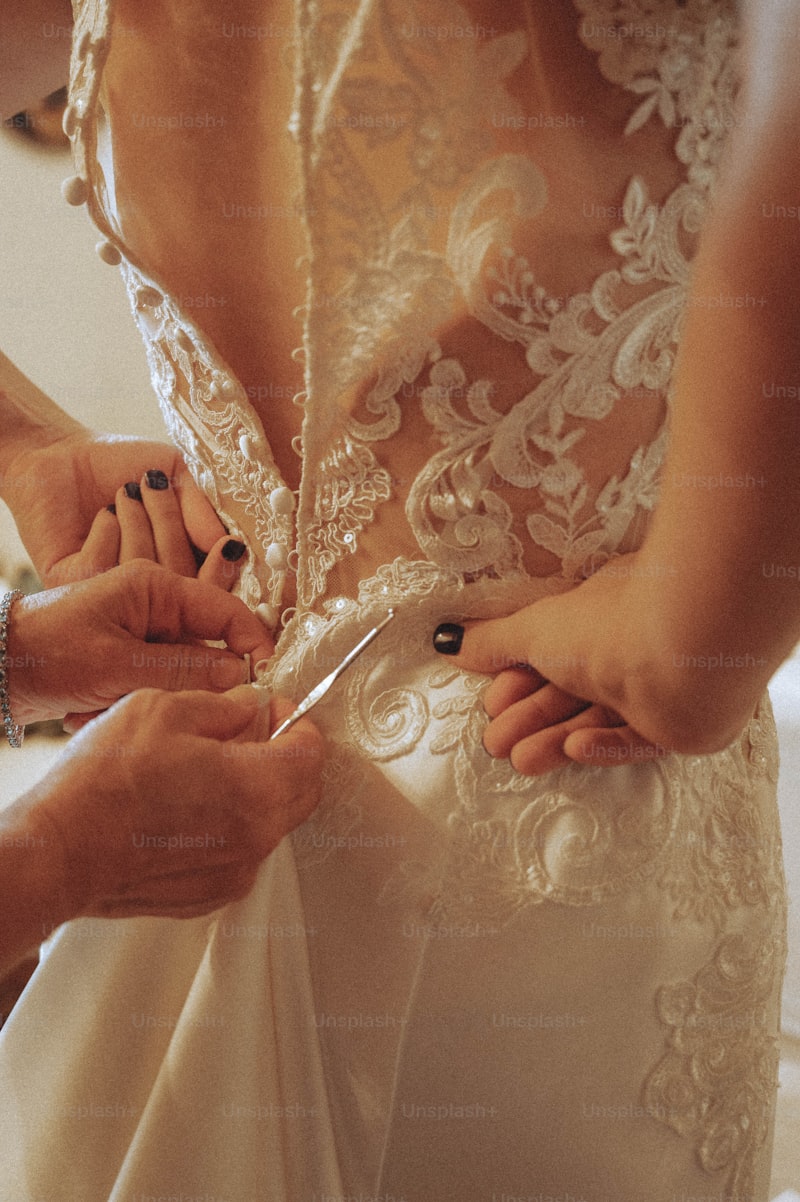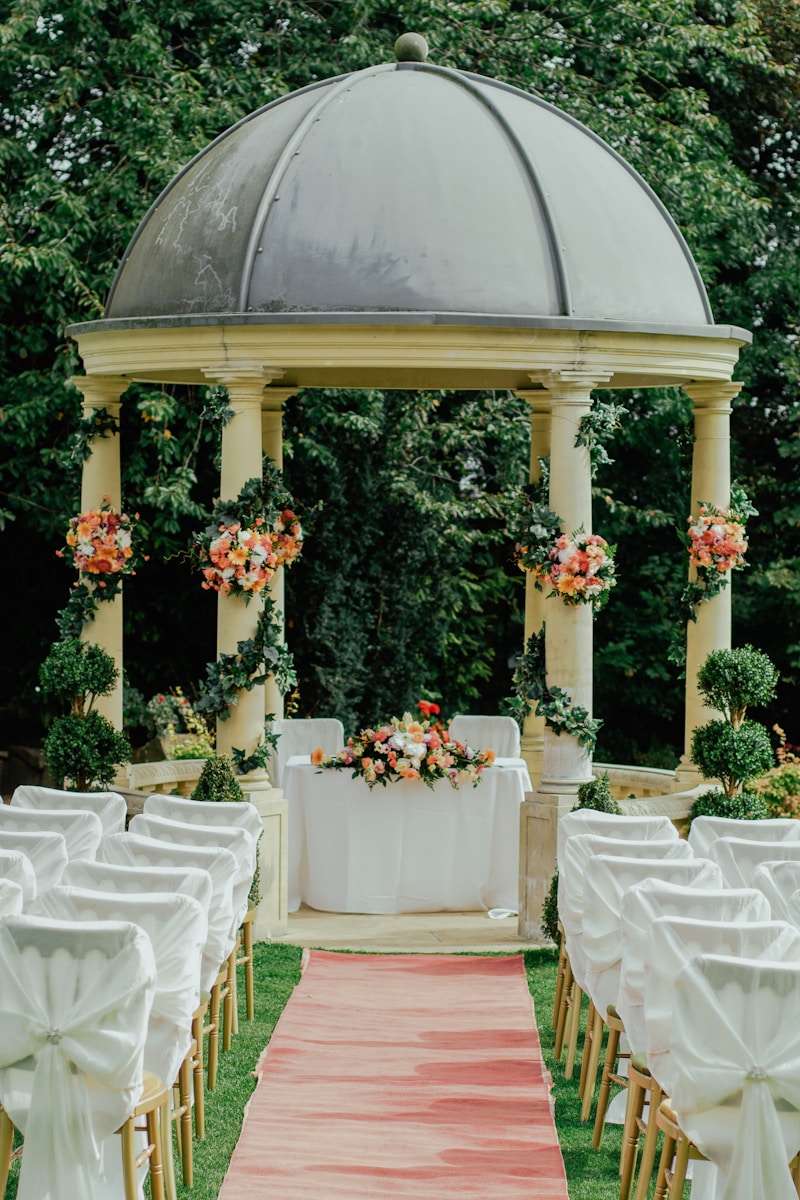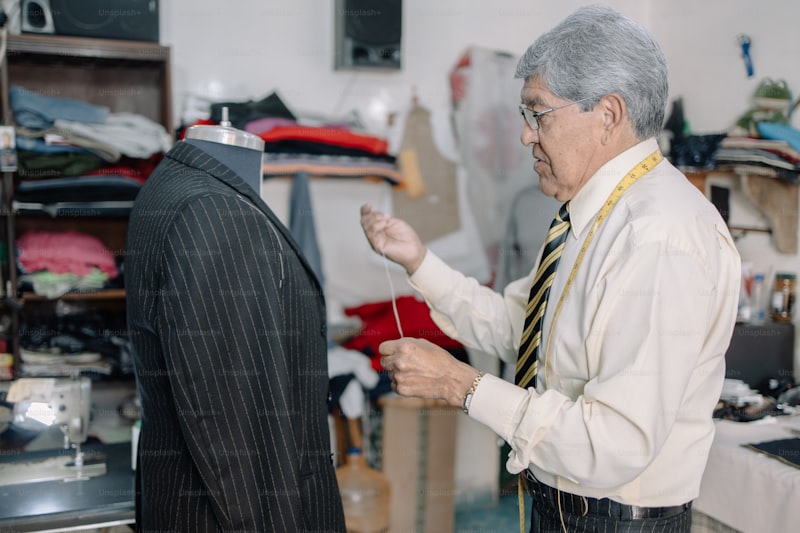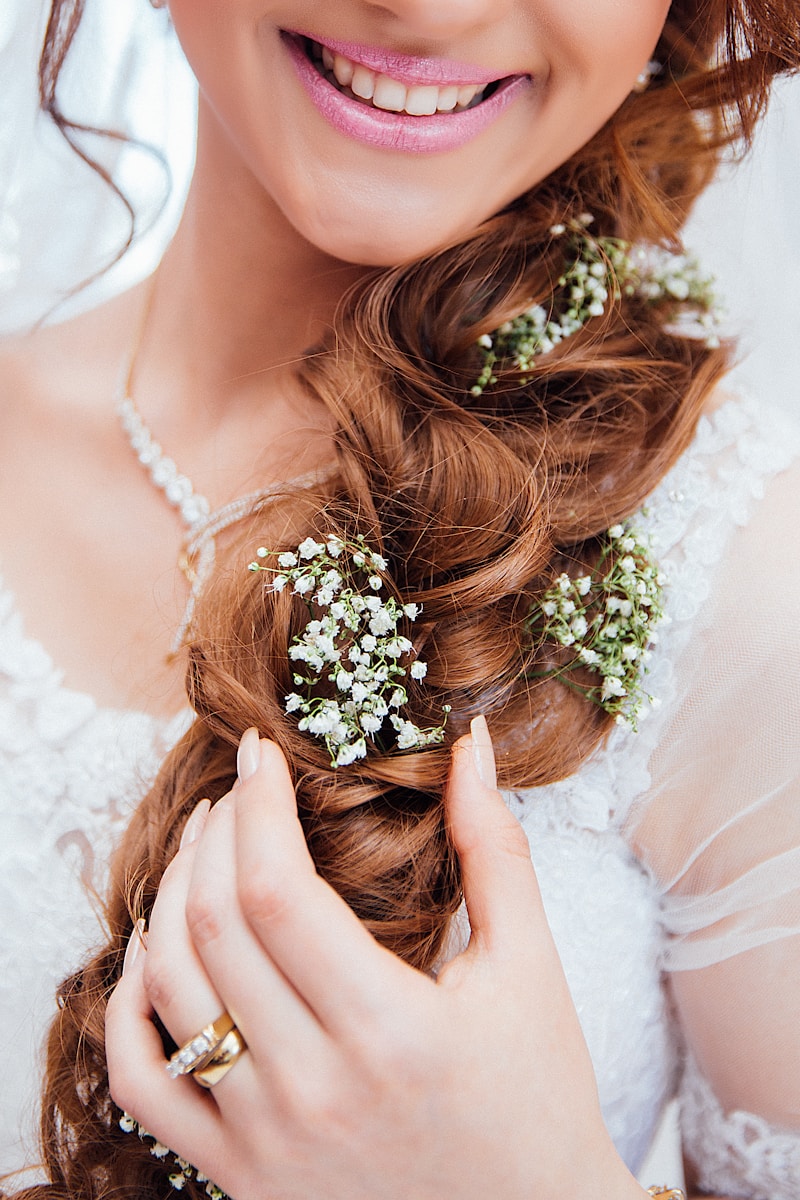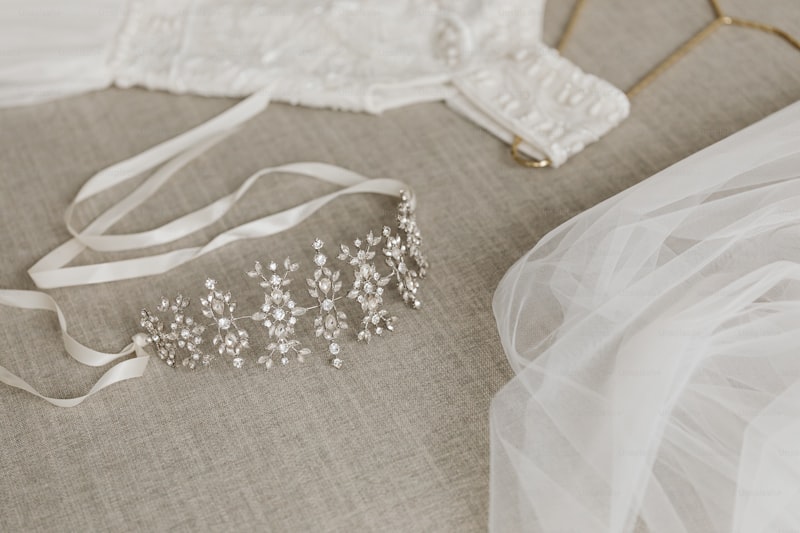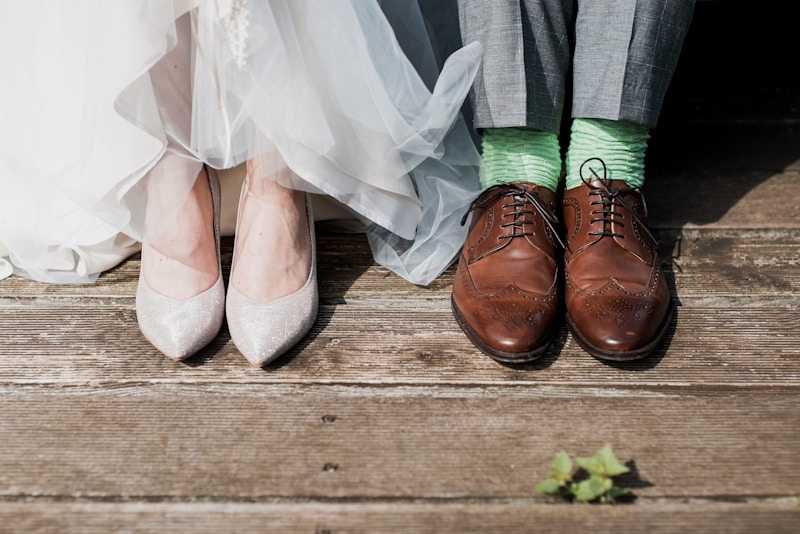Essential Wedding Dress Care and Storage: A Comprehensive Guide
Your wedding dress is more than just a beautiful garment; it’s a symbol of love, joy, and commitment. After the vows are exchanged, preserving the beauty of your wedding dress is paramount. In this guide, we’ll delve into essential wedding dress care and storage, ensuring that your gown remains in pristine condition for years to come. This article will not only cover maintenance tips but also discuss the right approach to storing your wedding dress, making your memories last a lifetime.Understanding the Importance of Proper Wedding Dress CareThe first step in ensuring your wedding dress remains beautiful is to understand why proper care is essential. Wedding dresses are often made from delicate fabrics like silk, lace, and satin, which can easily be damaged if not handled correctly. Here are several key factors to consider: Fabric Sensitivity: Each fabric has unique care requirements. Stains and Dirt: Any stains must be treated immediately to avoid permanent damage. Emotional Value: Your dress holds sentimental value that should be preserved.Immediate Steps After the WeddingAfter the ceremony, it's essential to take immediate action to preserve your wedding dress. Follow these steps to ensure its longevity:StepDescription1Remove the dress carefully: Avoid dragging the dress on the ground.2Address stains: Spot clean any stains with a mild solution.3Allow the dress to breathe: Hang it in a cool, dry place before cleaning.4Consult a professional cleaner: Find a cleaner ...
Exploring Alternative Bridal Dress Options: Make Your Big Day Unforgettable
Why Consider Alternative Bridal Dress Options?Your wedding day is one of the most important days of your life, and selecting the perfect bridal dress is a crucial part of that experience. While traditional white gowns have long been the standard, many brides are now exploring alternative bridal dress options to reflect their unique personalities and styles. In this article, we'll delve into various alternative bridal dress ideas, styles, and tips to make an unforgettable impression on your special day.Understanding Alternative Bridal Dress OptionsWhen we refer to "alternative bridal dress options," we encompass a broad spectrum of styles that deviate from the conventional wedding gown. This category can include:Colored Dresses: Non-white wedding dresses can create a stunning look and highlight your personality, whether it's a soft pastel, bold color, or even black.Jumpsuits: Many modern brides are choosing chic jumpsuits that offer comfort and style without compromising on elegance.Short Dresses: Perfect for a more casual vibe or summer weddings, short dresses are on-trend and can be quite flattering.Vintage Gowns: Vintage dresses might be a beautiful ode to past fashions, often featuring intricate details and a unique flair.Creative Fashion Statements: Some brides are incorporating unique elements like capes, separates, or even costumes to showcase their individual style.Table: Different Types of Alternative Bridal DressesTypeFeaturesIdeal ForColored DressesVibrant colors, v...
Exploring Wedding Dress Financing Options: Making Your Dream Dress Affordable
Weddings are significant milestones in our lives, and choosing the perfect wedding dress is often one of the most emotional and exciting parts of the planning process. However, the cost of a wedding dress can be daunting, driving many brides to seek financing options. In this article, we will explore various wedding dress financing options available today, helping you navigate through the possibilities to make your dream dress a reality without breaking the bank.Understanding the Cost of Wedding DressesThe first step in considering financing options is to understand the average cost of wedding dresses. According to recent surveys, the average cost of a wedding dress in the United States ranges from $1,500 to $3,000. However, designer gowns can go much higher, often exceeding $5,000 or more. Given this investment, it’s important to explore your financing options.Why Consider Wedding Dress Financing?Many brides prefer to finance their wedding dresses for several reasons:Affordability: Financing allows brides to acquire their dream dress without a hefty upfront payment.Flexible Payment Plans: Many financing options offer flexible repayment plans that fit well within a budget.Avoiding Compromise: Instead of settling for a less expensive dress, financing empowers brides to pursue their ideal gown.Types of Wedding Dress Financing OptionsHere are some prominent financing options to consider when planning your purchase:1. In-House Financing from Bridal SalonsMany bridal salons offer ...
Creative Wedding Attire Solutions: Stand Out on Your Special Day
Weddings are a time for love, celebration, and of course, style. Choosing the right wedding attire can be a daunting task, especially for couples who want to break away from traditional norms. In this article, we will explore various creative wedding attire solutions that will make your special day unique and unforgettable. From innovative fabrics to unconventional designs, let's uncover what the modern couple can wear to express their individuality.The Importance of Personal Style in Wedding AttireYour wedding day is one of the most significant moments in your life, and your wedding attire should reflect your personality and style. While many couples opt for traditional garments, there is a growing trend towards personalization and creativity in wedding attire. By choosing outfits that resonate with your personal taste, you create a more authentic celebration.Understanding Different Wedding ThemesTo begin with, it is essential to identify the theme of your wedding. Your attire should harmonize with the overall vibe of your ceremony and reception. Some popular wedding themes include:ThemeDescriptionBohemianRelaxed and earthy, featuring flowing silhouettes and natural fabrics.ModernSleek and minimalist style with bold colors and unconventional cuts.VintageTimeless designs, often inspired by specific past decades.RusticCasual and comfortable, focusing on earthy tones and natural textures.DestinationLightweight and breathable attire suited for tropical settings.Unconventional At...
Maximizing Your Bridal Fashion Budget: The Ultimate Guide to Affordable Elegance
Understanding Your Bridal Fashion BudgetPlanning a wedding can be a daunting task, especially when it comes to managing your bridal fashion budget. It’s no secret that weddings can be expensive, and bridal clothing often takes up a significant portion of that budget. However, there are numerous strategies to help you maximize your bridal fashion budget without sacrificing style or elegance. In this guide, we will explore cost-effective options, tips for smarter shopping, and ways to achieve that dream bridal look while sticking to your financial plan.Setting Your BudgetThe first step in maximizing your bridal fashion budget is setting a clear and realistic budget. Here’s a simple framework to guide you:Budget ItemEstimated CostWedding Dress$800Accessories (Veil, Jewelry)$200Bridesmaid Dresses$300Alterations$150Total$1,600By planning out each element of your bridal fashion needs, you can allocate funds appropriately to ensure you don't overspend in one area.Choosing the Right Wedding DressYour wedding dress is the centerpiece of your bridal fashion budget. Here are some tips for finding a beautiful gown without breaking the bank:Explore Different Shopping OptionsConsider shopping at various locations:Bridal Salons: Look for local bridal shops that offer a range of affordable dresses.Online Retailers: websites like ASOS or Lulus often have dresses that mimic high-end styles.Consignment Stores: Gently-used dresses can often be found for a fraction of their retail price.Sample Sa...
Navigating Wedding Dress Timelines and Budgets: A Comprehensive Guide
Planning a wedding is an exciting yet overwhelming experience, especially when it comes to choosing the perfect wedding dress. Understanding wedding dress timelines and budgets is crucial for ensuring that your big day goes off without a hitch. In this guide, we will explore the essential aspects of planning your wedding dress purchase, setting a budget, and adhering to a realistic timeline. Whether you're in the early stages of planning or nearing your wedding date, this article will help you navigate the intricacies of wedding dress shopping more effectively.The Importance of Timelines in Wedding Dress PlanningOne of the key elements in planning your wedding dress purchase is setting a timeline. The right timeline ensures that you have ample time to explore options, make decisions, and account for any necessary alterations. Below are some key stages to consider:Timeline StageDetails12 Months BeforeStart your wedding dress search. Research styles, visit bridal boutiques, and gather inspiration from wedding magazines or online platforms like Pinterest.10 Months BeforeDecide on a budget. This is the time to determine how much you can realistically spend on your wedding dress.8 Months BeforeOrder your dress. Many designers require a 6 to 8 month lead time for custom gowns, so place your order early.6 Months BeforeSchedule fittings. Once you receive your dress, you'll need at least two fittings to ensure a perfect fit.1 Month BeforeFinal fitting. Confirm that all adjustments hav...
Ultimate Guide to Fitment for Wedding Dresses: Everything You Need to Know
Choosing the perfect wedding dress is an exhilarating yet daunting experience for brides-to-be. One of the most critical factors to consider is the fitment for wedding dresses. This article will explore the various aspects of dress fitment, helping you make informed decisions while navigating this beautiful journey.Understanding Fitment for Wedding DressesWhen we talk about fitment for wedding dresses, we refer to how well a dress conforms to the bride’s body shape, size, and proportions. Achieving the right fit is crucial not only for aesthetic reasons but also for comfort on a day filled with emotions and activities. Let’s delve into the elements that contribute to the perfect fit.Types of Wedding Dress FitsWedding dresses come in various silhouettes, each designed to flatter different body types. Here’s a brief overview of the most popular fits:SilhouetteDescriptionA-LineThis dress features a fitted bodice that flares out gently to the hem, creating an ‘A’ shape. Ideal for most body types.Ball GownCharacterized by a full skirt that flares out from the waist, making it perfect for brides wanting a fairytale look. Best for hourglass figures.MermaidFitted through the body and flaring out at the knee, this style is ideal for showcasing curves. Suitable for hourglass and petite figures.SheathA straight-cut dress that flows down the body, this style is perfect for brides seeking a modern and understated look. Works well for slim figures.Tea-LengthThis dress falls between the kne...
Tailoring Options for Brides: Elevate Your Wedding Look with Custom Styles
Weddings are a celebration of love, and every bride dreams of looking nothing short of spectacular on her special day. One of the most critical components of achieving that dream is selecting the right dress, and for many brides, this involves considering various tailoring options. In this article, we will explore the many tailoring options for brides, helping you to create a unique wedding look that reflects your personal style and enhances your beauty.Understanding Tailoring Options for BridesWhen it comes to wedding dresses, off-the-rack options may not always meet every bride's vision. Tailoring allows for customization to fit the unique shape and preferences of each bride. Various tailoring options can enhance the fit, style, and overall appearance of a wedding gown. Here are some popular tailoring options:1. Custom MeasurementsOne of the most critical aspects of tailoring is obtaining custom measurements. Unlike standard sizes, which can often lead to ill-fitting dresses, custom measurements ensure that the gown hugs your body perfectly. This process involves taking accurate measurements of your bust, waist, hips, and other key areas. Many bridal shops offer a measuring service as part of their fitting appointments.2. Fabric AlterationsAltering the fabric of your wedding gown can significantly impact its overall look and feel. Here are some common fabric tailoring options:Fabric TypeAlteration OptionImpact on DressSilkAdding lace overlaysEnhances elegance and textureTul...
Size Adjustments for Formal Wear: The Ultimate Guide to a Perfect Fit
When it comes to formal wear, achieving the perfect fit is crucial for making a lasting impression. Whether it’s for a wedding, a business meeting, or any formal event, understanding size adjustments for formal wear can elevate your appearance significantly. In this comprehensive guide, we’ll delve into everything you need to know about size adjustments, ensuring you look your best without compromising comfort.Why Size Adjustments MatterWearing a well-fitted suit or dress can boost your confidence and enhance your overall look. Size adjustments play a vital role in tailoring formal wear to fit your unique body shape and size. Most off-the-rack formal clothing doesn't fit everyone perfectly due to variations in body types. This is where having a professional tailor comes in handy.The Importance of Professional TailoringProfessional tailors are skilled in various adjustments that can transform a generic piece into something tailored just for you. Common adjustments include:Adjustment TypeDescriptionTaking In/Letting OutAdjusting the seams to make the garment tighter or looser.Shortening SleevesModifying the length of the sleeves to suit your arms.Hem AdjustmentsChanging the length of trousers or skirts for a polished look.Shoulder AdjustmentsFixing the width of the shoulders for a balanced appearance.Waist AdjustmentsTightening or loosening the waistband for comfort.Common Size Adjustments for Different Types of Formal WearDifferent types of formal wear require specific adjustm...
The Importance of Accurate Measurements: Why Precision Matters in Every Field
Understanding the Significance of Accurate MeasurementsIn an increasingly data-driven world, the importance of accurate measurements has never been more pronounced. Whether in science, engineering, medicine, or everyday life, precision is crucial for achieving desired outcomes and making informed decisions. From calculating the dosage of a medication to determining the dimensions of a construction project, the details matter. This article will explore various aspects of accurate measurements, their applications, and why they are essential.What Are Accurate Measurements?Accurate measurements refer to the degree of closeness of a measured value to its true value. In simpler terms, it represents how correct a measurement is. For instance, if a scale shows that an object weighs 5 kg, but its actual weight is 5.1 kg, the measurement is not accurate. Accurate measurements are vital in ensuring quality across multiple sectors and disciplines.Applications of Accurate MeasurementsAccurate measurements play a critical role in various fields, including:FieldImportanceScienceAccurate data collection is crucial for experiments to achieve valid results.EngineeringPrecision in measurements ensures the integrity and safety of structures and machinery.MedicineCorrect dosages are vital for effective treatment and patient safety.CookingFollowing recipes accurately leads to the best culinary results.Why Is Accuracy So Important?The significance of accurate measurements can be distilled into seve...
Finding Your Perfect Silhouette: A Comprehensive Guide
Embarking on a Journey to Your Ideal SilhouetteIn today's world, the quest for the perfect silhouette has become a significant aspect of personal style and self-expression. Whether you're shopping for clothes, preparing for a special event, or simply aiming to refine your wardrobe, understanding how to find your perfect silhouette can truly transform the way you perceive yourself. Not only does a well-chosen silhouette enhance your appearance, but it also boosts your confidence. This guide will explore everything you need to know about finding and embracing your perfect silhouette, offering tips and insights along the way.Understanding SilhouettesBefore diving into how to find your perfect silhouette, it's essential to understand what a silhouette is. In fashion, a silhouette refers to the overall shape and outline of the clothing that is worn. It encompasses various elements like cut, fit, and style that define how an outfit looks when it's worn. There are several key shapes that can be used to enhance your natural body type, including: A-line Hourglass Rectangle Pear Inverted TriangleIdentifying Your Body ShapeThe first step in finding your perfect silhouette is to identify your body shape. Everyone's body shape is unique, and knowing yours will help you choose clothes that highlight your best features. Here’s a simple method to determine your body shape:Body ShapeCharacteristicsA-LineNarrow shoulders with a wider bottom.HourglassBalanced proportions with a d...
Understanding Dress Shapes and Sizes: A Comprehensive Guide
When it comes to fashion, understanding dress shapes and sizes can make all the difference in how we feel and present ourselves. The world of dresses is vast, with many styles designed for different body types and occasions. In this guide, we will explore various dress shapes, sizes, and how to choose the perfect fit. Whether you're dressing for a casual outing, a formal event, or planning a wedding, this article aims to provide you with all the information you need.The Importance of Dress ShapesDresses come in various shapes, each designed to flatter different body types. Understanding these shapes not only helps you choose the right dress but also ensures you feel comfortable and confident in what you wear. Below are some common dress shapes:Dress ShapeDescriptionA-LineThis dress shape is fitted at the bodice and gradually flares out from the waist, resembling the letter 'A'. It is flattering for most body types.EmpireWith a high waistline just under the bust, this dress style flows down to the hem. It is perfect for those wanting to emphasize the bust while skimming over the hips.BodyconThese dresses fit tightly to the body, highlighting curves. They are ideal for showcasing a slim figure.MaxiCharacterized by its floor-length design, the maxi dress is versatile for both casual and formal occasions.ShiftA shift dress flows straight down from the shoulders, offering a loose fit. It works well for rectangle and apple-shaped body types.Understanding Dress SizesDress sizes can ...
The Ultimate Guide to Bridal Gown Fitting Appointments: What You Need to Know
Introduction to Bridal Gown Fitting AppointmentsWhen it comes to wedding planning, the bridal gown fitting appointment is one of the most exciting yet crucial parts of the journey. Your wedding dress is not just an outfit; it symbolizes your unique style and the special day that awaits. But what exactly should you expect during these appointments? This guide will explore the ins and outs of bridal gown fitting appointments, ensuring that you are fully prepared for this memorable experience.What is a Bridal Gown Fitting Appointment?A bridal gown fitting appointment is a scheduled session at a bridal salon where the bride tries on her wedding dress and discusses any alterations or adjustments required for a perfect fit. These appointments are typically scheduled after the bride has chosen her gown, allowing the seamstress to tailor the dress to the bride’s measurements and shape.Why Are Fitting Appointments Important?Fitting appointments are vital for several reasons:Perfect Fit: Every bride wants to look her best on her big day. Custom alterations ensure that the dress hugs your body in all the right places.Adjustments: Wedding gowns often require adjustments in areas like the hem, bust, and waist, particularly if the dress is a sample size.Comfort: A well-fitted dress allows you to move freely and comfortably, essential for a day filled with celebrations.Confidence: Knowing that your gown fits perfectly can give you the confidence you need to walk down the aisle with poise.Ho...
Unlocking the Secrets of Dress Alterations for a Custom Fit: A Comprehensive Guide
Understanding Dress Alterations for a Custom FitWhen you purchase a beautiful dress, it’s vital to ensure that it fits perfectly. While buying off-the-rack may seem convenient, the truth is that only a very small percentage of dresses fit every body type without some form of adjustment. This is where dress alterations for a custom fit come into play. By tailoring your dress, you can achieve that sophisticated look you’ve always desired. In this guide, we’ll explore everything you need to know about dress alterations, why they are essential, and how to find the right tailor.Why Are Dress Alterations Important?Many individuals wonder why dress alterations are necessary, especially when a garment is labeled with a size. Here are some key reasons: **Flattering Fit:** Tailoring helps to accentuate your body shape, providing a silhouette that is both flattering and elegant. **Comfort:** A properly fitted dress enhances comfort, allowing freedom of movement while maintaining style. **Styles Change:** Trends in fashion evolve over time; skilled alterations can breathe new life into older garments that may have gone out of style.Types of Dress AlterationsUnderstanding the different types of dress alterations can help you communicate effectively with your tailor. Below are some common types: Alteration Type Description Hem Adjustment Shortening or lengthening the dress, especially essential for floor-length gowns. Taking In or Letting Out Modifying the side s...
Essential Fitting Tips for Plus-Size Brides: Elevate Your Bridal Experience
Choosing the perfect wedding dress is one of the most exciting and sometimes overwhelming parts of planning a wedding, especially for plus-size brides. Understanding how to complement your unique body shape while ensuring comfort and elegance is key. This article provides essential fitting tips tailored specifically for plus-size brides to help you find your dream gown with confidence.Understanding Your Body ShapeBefore diving into the fitting process, it's vital to understand your body shape. Common plus-size body shapes include apple, pear, hourglass, and rectangle. Knowing your body type can help you select dresses that enhance your best features. Below is a brief overview:Body ShapeCharacteristicsBest Dress StylesAppleHeavier top, slimmer legsA-line, empire waistPearWider hips, smaller bustBall gown, off-the-shoulderHourglassBalanced bust and hipsMermaid, fittedRectangleStraight silhouetteBelts, ruffles to create curvesSetting a BudgetBudgeting for your wedding gown is essential. Plus-size dresses can be priced similarly to standard sizes, but it’s always good to consider that custom alterations may be required. Typically, a budget of $1,000 to $3,000 is common for many brides. However, it’s possible to find stylish options within a lower price bracket.Book Appointments WiselyWhen scheduling fittings, it’s wise to book appointments with bridal shops that specialize in plus-size gowns. Make sure to call ahead and confirm they have a selection that caters specifically to yo...
Choosing the Right Neckline for Your Fit: A Comprehensive Guide
Understanding Necklines: The Foundation of Your WardrobeWhen it comes to fashion, the neckline is a crucial element that can drastically affect your outfit's overall appearance. Not only does it contribute to the structure of an outfit, but it also impacts how your body proportions are perceived. In this article, we will explore how to choose the right neckline for your fit, the various types of necklines available, and how they can enhance your look.Why Neckline MattersThe neckline of a garment defines the shape and style of the piece, influencing the aesthetics as well as comfort. An appropriate neckline can emphasize your features, create an illusion of height or width, and express your personal style. Here’s why neckline selection is fundamental: Proportion: The right neckline can balance your body shape, making you appear taller or slimmer. Style: Different necklines convey different vibes, from casual to formal. Comfort: Certain necklines may be more comfortable for various occasions.Types of NecklinesUnderstanding the different types of necklines is crucial for making an informed choice. Below are some popular necklines and their unique features: Neckline Type Description Best for V-Neck A neckline that dips down in the front, forming a "V" shape. All body types; elongates the neck. Round Neck A simple and classic circular neckline. Almost all body types; provides a modest look....
Fitting Practices for Destination Weddings: Make Your Dream Celebration a Reality
Understanding Fitting Practices for Destination WeddingsDestination weddings are a romantic and adventurous way to tie the knot, appealing to couples who want to celebrate their love in breathtaking locations away from home. However, planning a destination wedding involves unique challenges, especially when it comes to fitting practices for attire, venue selections, and logistics.The Importance of Proper Fitting for Wedding AttireYour wedding day is one of the most important moments in your life, and looking your best is essential. When it comes to destination weddings, getting the perfect fit for your wedding attire is crucial, given the different climates, venues, and travel conditions.1. Understanding Local Tailoring OptionsOne of the first steps in ensuring a perfect fit is researching local tailoring options at your chosen destination. It’s essential to check reviews and see if there are any reputable tailors or bridal boutiques nearby. Moreover, local tailors often have experience working with destination wedding attire, which can help you achieve the desired fit and style.2. Consider Climate and MaterialThe location of your destination wedding impacts your fabric choices and fitting. For example, a beach wedding in Hawaii calls for lighter, breathable fabrics like chiffon or organza, while a winter wedding in the Alps may require heavier materials like satin or velvet. Accordingly, be mindful of the fit and style suitable for the climate.ClimateFabric OptionsFit Recomm...
Mastering Strategic Styling for Figure Flattery: Your Ultimate Guide
When it comes to fashion, the idea of dressing well revolves around one central concept: feeling confident in your skin. Strategic styling for figure flattery is an art that focuses on enhancing one’s natural shape and bringing out the best features while downplaying others. This comprehensive guide aims to arm you with the necessary knowledge and skills to achieve that ideal look. By employing strategic styling techniques, you can accentuate your figure in a way that not only flatters your silhouette but boosts your confidence as well.Understanding Your Body TypeBefore diving into the world of strategic styling, it is crucial to understand your body type. Body types can generally be categorized into several categories, including the hourglass, pear, apple, rectangle, and inverted triangle shapes. Knowing your body shape allows you to choose clothes that enhance your natural curves.Body ShapeCharacteristicsStyling TipsHourglassDefined waist with equal bust and hip measurementsOpt for fitted dresses and high-waisted bottoms.PearWider hips compared to bustCreate balance with A-line skirts and embellished tops.AppleWider bust with slimmer hipsChoose empire waist dresses and structured blazers.RectangleSimilar measurements across bust, waist, and hipsAdd curves with ruffle details and belted looks.Inverted TriangleBroad shoulders with narrower hipsBalance the look with flared or wide-legged bottoms.Choosing the Right Fabrics and ColorsWhen it comes to strategic styling for figure...
Mastering Layering Techniques for Added Comfort in Fashion
The Art of Layering: Your Guide to Added ComfortLayering techniques have become a key aspect of modern fashion, offering not only style but also functionality and comfort. In a world where personal expression meets practical needs, mastering layering can transform your wardrobe into a versatile collection fit for any situation. This article explores various layering techniques, their benefits, and tips on how to incorporate them into your style for added comfort.Why Layering MattersLayering is not just a trend; it’s a strategic approach to dressing. By combining different pieces, you can adjust to varying temperatures, create depth in your outfit, and express your personal style. Here are some compelling reasons why layering techniques are essential: Weather Adaptability: Layering allows you to bundle up during colder months and peel off layers when temperatures rise. Versatility: A well-layered outfit can transition easily from day to night or from casual to formal with little effort. Style Expression: Layering can create the illusion of different silhouettes, helping you reinvent your looks.Basic Layering TechniquesTo effectively use layering techniques, it's vital to understand the basics. Below are foundational strategies that can enhance your comfort and style.1. The Base LayerThe base layer is crucial as it sits directly on your skin. It should be made from breathable materials that wick moisture and ensure comfort. Consider options like: Lightweight cotton ...
Ultimate Guide to Heat Retention for Seasonal Bridal Wear
Introduction to Seasonal Bridal Wear When planning a wedding, every detail matters, from the venue and décor to the bridal gown. One important aspect that often gets overlooked is heat retention in bridal wear, especially for seasons with colder climates. As winter or early spring weddings become increasingly popular, understanding how to choose the right materials and designs becomes essential. In this article, we will explore the concept of heat retention for seasonal bridal wear and how brides can stay warm while looking stunning on their special day. Why is Heat Retention Important for Bridal Wear? Bridal gowns are traditionally associated with elegance and style, but they also need to be functional, especially in colder seasons. Here are a few reasons why heat retention should be a priority for brides: Comfort: Brides want to look beautiful but also need to feel comfortable throughout their wedding day. A gown that keeps warmth can enhance the overall experience. Durability: Fabrics with good heat retention not only keep the wearer warm but can often withstand the elements better, ensuring the gown maintains its integrity. Style Versatility: Choosing the right materials can allow for versatile styles, including long sleeves, heavier fabrics, and layering options that look chic while providing warmth. Materials That Retain Heat When selecting a bridal gown for colder seasons, certain materials can significantly improve heat retention. Here’s a closer look at...
